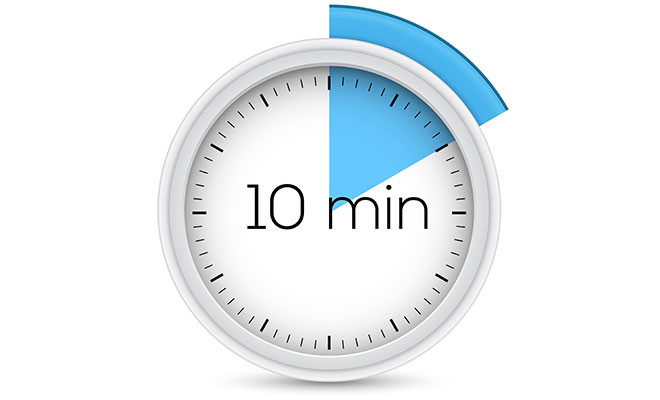
10min Money Management
I’ve met people who track their spending on a spreadsheet. They tend to have names like Ian and Cheryl, and they bring homemade hummus and day-old bread to your barbie. Or worse, their home brew (‘It works out to be only eight cents a glass! Yes, and it tastes like it too, Ian.)
This is no way to live your life. Your daily latte won’t send you broke. To this day I’ve never, ever been able to stick to a budget – but I’ve compensated by letting technology do the heavy lifting for me.
It’s called the 60-20-20 plan – 60 per cent safety, 20 per cent savings, and 20 per cent splurging – and it’s the easiest way I know to manage your money.
Safety – 60 per cent
Safety means allocating 60 per cent of your take home on food, shelter and dog biscuits. All the things you need to live safely in the suburbs.
If you’re like most people it will divide up something like this:
- Mortgage: 30 per cent (but not if you’ve bought in Point Cook)
- Food: 15 per cent (or a bit more if you watch The Biggest Loser)
- Mobile and broadband: 5 per cent (unless you’re Stephen Conroy)
- Car: 10 per cent (unless you’re Bob Brown, who rides a bike)
Let’s talk dollars. An average couple pulling in a combined $120,000 a year (without any crying tax deductions – yet) takes home about $1,850 a week. So they would have to sock away:
- Mortgage: $555
- Food: $277
- Mobile and broadband: $90
- Car: $185
Knowing how much it costs to run You Inc is scary, but powerful – so work out your percentages. In times of trouble, this is the minimum amount you need to bring in to keep the lights on and the cat warm.
Savings: 20 per cent
Allocate 20 per cent of your hard-earned to savings.
Hang on a minute. If you’ve got any credit card debt or personal loans you’ll need to do the following:
First, save $2,000 into a Mojo account – a high-interest online savings account. For our average couple this would take them a little over six weeks to save (20 per cent of $1,850 = 370 x 6 = $2,220).
Second, start paying off your minor debts by attacking the smallest one first (say a parking fine), knocking it over, and then moving on to the next biggest one – and keep going. I call this method ‘domino your debts’, because you knock them down one by one. (By the way, your major debts, like HECS-HELP and the mortgage will obviously take longer.)
Now you’re (mostly) debt free, you can begin paying yourself – every dollar you put into your savings account is like getting a payrise at work without doing anything – it’s like being a politician.
The best legal tax dodge going around is superannuation – especially if you earn under $62,000. Call your fund and ask about chipping more into your fund via the Government’s co-contributions scheme.
Then you have a choice: you can aggressively pay down your mortgage (or if you’re renting, you can aggressively save for your deposit via a First Home Saver Account), or you can begin building an investment portfolio of direct shares. I do a mixture of both.
Splurge: 20 per cent
You are hereby directed to go out and blow 10 per cent of your money on crap that makes you feel good (shoes, booze, and anything else you want).
The other 10 per cent of your splurge money should go to longer-term splurges: overseas holidays, weddings, divorces, anything that is going to cost more than a few weeks’ wages.
For our couple, this means dinners to the value of $185 a week, and sticking another $185 into the Greek Island Getaway fund.
The best place for keeping your splurge funds is uBank, which is currently paying the highest rate of interest on the market (as at Feb 18th 2011), and lets you create sub-accounts for your different goals.
The key is to make sure your splurges don’t drain your bank. Think about the big goals you have over the next 12 months, and chunk them down to weekly amounts.
OK COMPUTER
Here’s you: “This sounds like a lot of, like, work.”
Here’s me: “Nope – the 60-20-20 plan puts your money on autopilot.”
That’s the beauty of this plan: once you’ve crunched some numbers and set up your accounts, the system runs itself. Best of all it’ll take you only ten minutes a month to monitor.
Here’s how to get started quick:
1. Over the first week keep tallying up your expenses (either with an old school pen and paper, or an iPhone app that tracks your spending), so you know where the dough is going. Relax, this isn’t a tut-tut judgmental stuff, just keeping a track on where you spend your money.
2. When you calculate your percentages for safety, savings and splurging, make a few calls to see if you can screw down your suppliers (see last week’s article for some money-saving scripts).
3. Keep a float of $500 in your savings account so you don’t accidentally overdraw and get hit with (unfair, perhaps illegal) fees.
4. For your 10 per cent ‘blow money’, physically take out cash each week. Get it in $10s and $20s. Then put it in an envelope and store it in your sock draw. It’s a psychological thing. Casinos use chips so you don’t freak out when you gamble away your (mother’s) rent, credit cards work the same way. (Case in point: the other week I bought something at Harvey Norman, and the pimply teenager at the checkout was like “Woah, dude, you’ve got, like, real money”.) Cold, hard cash is a lot harder to spend.
5. Once you have this plan in place you won’t have to worry about money again. That frees you up to focus on using the miracle of compound interest to turbocharge your wealth plans – which we’ll tackle next week.
Tread Your Own Path!
Shopping List:
1 X fee-free transaction account
1 X high-interest online savings account
1 X low-cost industry superannuation fund
1 X discount online sharebroker
1 X sock draw
Automate Your Money:
The 60-20-20 plan
- 60% Safety (all living expenses)
- 20% Savings (thinking ahead)
- 20% Splurge (things that make you smile)







